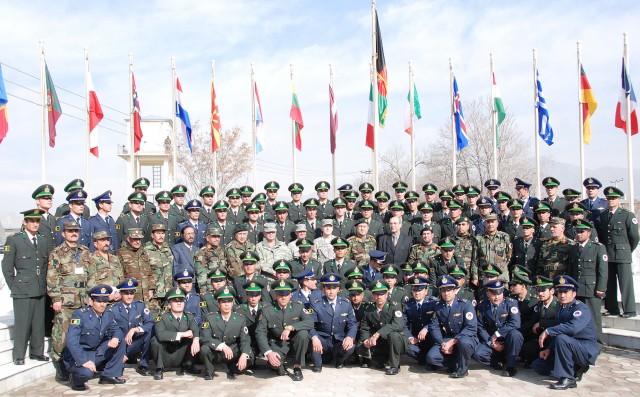The Islamic Republic of Afghanistan has begun a Long Gray Line of its own right.
The first class of the National Military Academy of Afghanistan, which was modeled after the U.S. Military Academy, graduated Jan. 25, making Afghanistan as a nation and American mentors extremely proud.
"To be part of this history and to witness what it was to what it is now cannot be adequately described in words," Col. Edward Naessens, senior academic mentor to the Afghan academy and USMA deputy physics department head, stated in an e-mail received Monday from Afghanistan. "I am so proud of the past U.S. mentors, the Afghan faculty and leadership and the cadets. I look at these graduates, and there is no doubt in my mind that Afghanistan has a great future."
The academy began in 2003 after Afghan military leaders chose USMA as a model. Leaders also considered modeling the academy after Britain's Royal Military Academy Sandhurst. A mentor team composed of USMA cadre, instructors from the Air Force Academy, Afghan interpreters and 10 Turkish officers have helped to establish the academy.
The team members "mentor, advise and support the Afghan faculty and department heads, the registrar, the brigade tactical department, the physical education program and the moral/ethical character development program," Naessens stated in an e-mail.
The academy grew from dire conditions. Buildings were bombed-out shells, and unexploded ordnance and mines riddled the ground.
"To see the vast improvements in infrastructure in four short years is one of the most professional rewarding experiences that I have; however, this pales in comparison to seeing cadets graduate from fully functional academic, military, physical and ethical programs of instructions to become leaders of competence and character in the Afghanistan National Army for the country of Afghanistan," Naessens stated in an e-mail.
Some 84 cadets graduated in the academy's first class, and most, 24, branched infantry.
Twenty others branched aviation and will attend the U.S. Army Aviation School at Fort Rucker, Ala.. Logistics and artillery branches each received 13 graduates, and armor and signal each received seven.
Naessens expects the next class to include the first graduates to join the engineer branch, which currently is under development. About 20 of the graduating cadets studied civil engineering and will work with the Afghanistan Engineering District of the U.S. Army Corps of Engineers.
The 84 graduates represent 120 accepted applicants out of 360, Naessens said. Next year's class has 215 on target to graduate out of more than 1,000 applications. The 300 cadets in the class of 2013 already have been selected from more than 2,200 applications.
The entire country of Afghanistan celebrated with graduates, Afghan President Hamid Karzai said during remarks at the ceremony.
"I am very proud to be a part of this ceremony, which is a very important and vital step toward a stable and self-sufficient country," he said. "Today, you all are graduating because of the hope of the mothers who have lost their fathers, brothers and husbands while defending this country."




Social Sharing